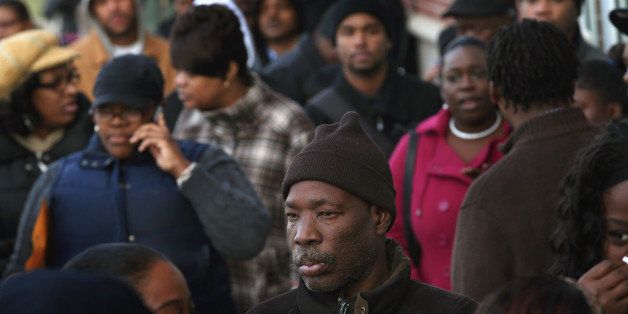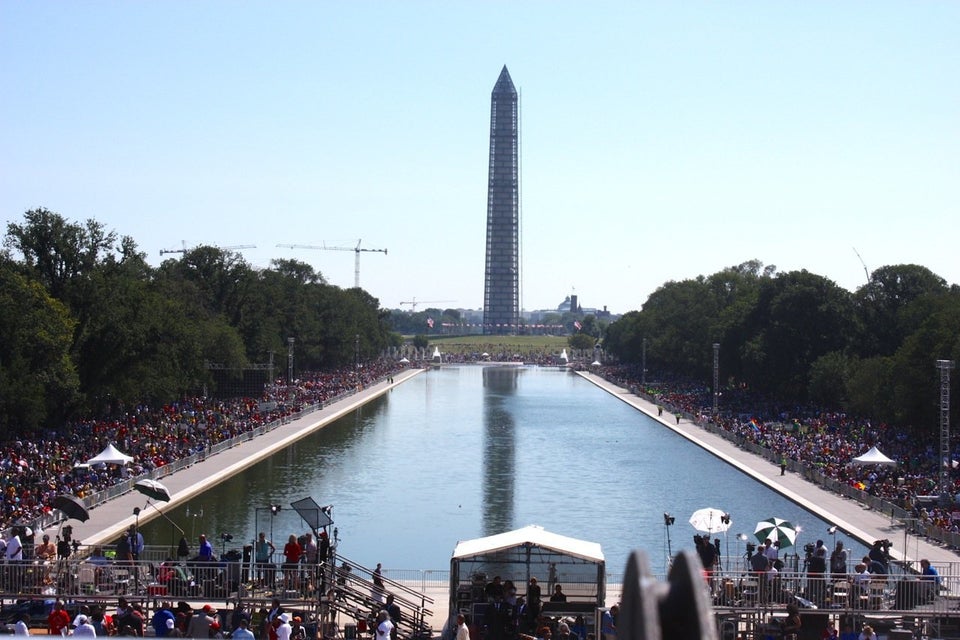
Fifty years after the "dream" of racial equality invoked by Martin Luther King at the March on Washington, the reality is that African-Americans still suffer the most unemployment.
Government statistics show the overall US unemployment rate stood at 7.4 percent in July.
But while whites had a jobless rate of 6.6 percent last month, the rate was nearly double for blacks at 12.6 percent.
By comparison, the Hispanic, or Latino, minority fared better, with 9.1 percent unemployed.
Asian-Americans were the least affected by the woes in the US labor market after the Great Recession; only 5.7 percent lacked jobs.
"Discriminations against African-Americans are still very pervasive, it's a major force of the economy," Heather McGhee, vice president of Demos, a Washington-based think tank on equal rights, told AFP.
The yawning gap between majority whites and blacks is nothing new and has persisted through periods of economic expansion and recession.
Since 1972 the jobless rate for blacks has held at roughly double that of the entire workforce.
Even at the end of 2000, amid full employment in the US, when the jobless rate was 3.9 percent, 7.3 percent of African-American workers were unemployed.
The weight of this joblessness has pushed blacks into the majority of the 27.6 percent of Americans living in poverty, although they represent only 13 percent of the population of some 316 million.
-- Progress, but not enough --
The statistics hide the fact that gains have been made since King's landmark call for equal rights and opportunities in 1963.
"There's been a lot of progress," McGhee said. "We have to make sure to not act as if the story of black America is a tragic one."
Nearly 50 years after segregation was ruled illegal in 1964, President Barack Obama is the first black president and blacks' access to education has improved enormously, she noted.
According to McGhee, 86 percent of blacks have attended high school, compared with 38 percent in 1963, and 20 percent are going to a college or university, compared with only 5 percent a half century ago.
However, she said, the effort to bridge the gap with whites has flagged. "We are suffering because we took our foot off the gas on integration."
Progress in education has not been enough to change the trajectory of joblessness, a University of Chicago economics professor and labor market expert, Ioana Marinescu, told AFP.
"Only a part of the gap is explained by differences in the level of education," she said.
According to experts, the negative stereotypes about blacks remain in the undercurrents of US society, but in different forms than in the past.
"Prejudice and bias have become unconscious," said McGhee, herself an African-American.
"It has become out of fashion to explicitly say that you don't want to hire a black person. We know how much these implicit biases influence people who are making decisions."
Statistics on minorities help to "illuminate the public debate" in the United States and to raise awareness about discrimination in the labor market, said Marinescu.
Businesses under contract with the US federal government must have measures in place promoting affirmative action, or positive discrimination, and favor the advancement of minorities, without resorting to quotas.
And US companies employing more than 100 workers have to publish an annual report on the ethnicity and gender of their workforces.
For Nancy DiTomaso, professor of management and global business at Rutgers Business School in New Jersey, persistent racial inequality is rooted in whites helping other whites.
"Most people got their jobs because someone helped them, either by providing them with information, by using influence on their behalf saying: 'this is my friend, look out for him', or by actually giving them a job or an opportunity," she told AFP.
According to DiTomaso, author of the book "The American Non-Dilemma: Racial Inequality Without Racism", the importance of this networking has put African-Americans at a disadvantage.
"The dynamic is not whites discriminating against blacks, it's that whites are helping other whites, and that's different," she said.
"People tend to say that they found a job because they worked hard and because they were motivated, rather than acknowledging that it happened through connections."
Copyright (2013) AFP. All rights reserved.
